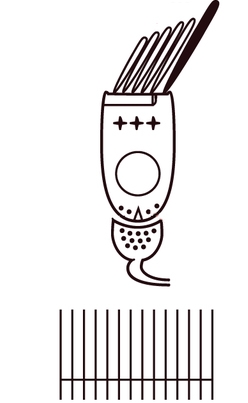A constant-velocity rotation consists initially of high-frequency components which enable the semicircular canals to provide an accurate measure of the speed of head rotation.
As a result of the mechanical properties of the endolymph and cupula, the angular VOR responds better to high-frequency (rapidly-changing) than to low-frequency (slowly-changing) head motion, and during sustained constant-velocity rotation, the hair cells are initially deflected, but they soon return to their resting position, so that the perception of rotation and nystagmus fades1.
This limiting characteristic is reflected in the fading of vestibular nystagmus during a constant-velocity rotation in darkness, as the cupula returns to its neutral position (see video below). In daylight, of course, visual (optokinetic) signals can be used in the place of the fading labyrinthine signal.
(vv)Vestibuloocular Reflex.mp4(tt)
To improve the low-frequency response of the angular VOR, a central velocity-storage mechanism maintains activity from the vestibular periphery by integrating the signal from the peripheral semicircular canals.
The cupula signal fades rapidly with the return of the hair cells to the resting position and the decline in activity of the vestibular nerve has a time constant of about 5 seconds. Velocity storage increases the time constant (the time for an exponential function to decay to 37% of its initial value) of the VOR to about 15-20 seconds, based on the nystagmus response. In this way, the ability of the angular VOR to reliably transduce head velocity to low-frequency stimuli is improved.
The anatomic substrate for the velocity storage mechanism which leads to the prolongation of the VOR duration is within the vestibular nuclei, the vestibular commissure, and their connections to the cerebellar nodulus and uvula3.
The velocity storage system receives continuous inputs from the visual and inertial systems. These inputs determine its activity to such a large extent that velocity storage may be viewed primarily as a multisensory integrator rather than as a process dedicated to lengthening the time constant of rotation perception. Of note, lengthening of the time constant of rotation perception is not relevant in the real world, because it only exists during rotations in darkness (ie, in the absence of otolith and visual information)2.
The action of the velocity-storage mechanism is the basis for a common clinical neuro-otological sign in patients with vestibular imbalance, headshaking nystagmus.
Velocity storage may also provide signals to the CNS which, in conjuction with the otoliths, assist in separating tilt and translation of the head by computing an internal estimate of gravity1.
Velocity storage operates only during horizontal head rotation. During vertical or torsional head rotations, the VOR response declines with a time constant of about 7 sec, which is about the same as that of the vestibular afferents1.

